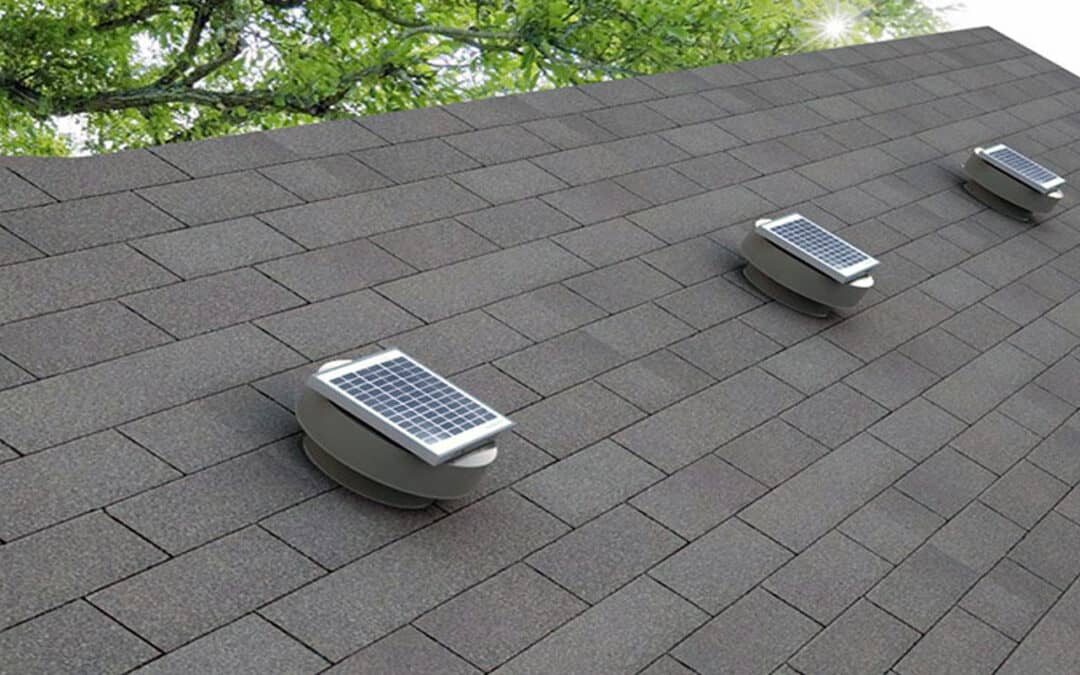Roof Ventilation – An Analogy
The water felt like it was 30 miles above my head. I decided (or was dared, I don’t really remember) to dive to the bottom of the pool. The deep end. Twelve feet down. I mean, that’s what a boy trying to become a man does, right? Stupid things to prove he’s worthy of manhood? Well, because of my pride, I had found myself gasping for air that wasn’t there. At this point, it didn’t really matter I only made it down to about ten feet, I WAS ABOUT TO DIE! My arms flailed and my legs kicked as I shot towards the surface. 3 feet…2 feet…1 foot…I exploded out and onto the surface like lava out of a Hawaiian volcano. I began gulping for any available oxygen around me completely exhausted and thoroughly excited, all at the same time. I never understood until this moment how important a single breath could be.
Breathing, we all do it. We all need it.
Even your own home needs to breath.
It does so through proper roof ventilation.
The interior of your home is where you notice it most. A properly ventilated living space rids itself of excess moisture, indoor pollutants and the lingering smell of dad’s attempt at baked salmon. Some of us will never be the same after dad’s attempt at baked salmon. But, good, proper and uninterrupted ventilation inside your home is vital for the area where you spend the most time. It allows for you to breathe easier.
Just like the livable space, the unlivable places in your home need to breathe as well.
Adequate air flow in your attic is vital for not only the health of your home and extending the life of your roof, it is one of the necessary components for you and your family’s health as well.
So how can a properly ventilated attic and roof system keep you from getting sick?
Actually, when you have the proper levels of intake and exhaust taking place inside your attic space, the possibility for the growth of mold and other hazards is dramatically reduced. We have all heard of the terrible health repercussions that black mold and other spores have on the human body. With the right system above your head, your home will be far less susceptible to such dangers. One of the original reasons why ventilation was even recognized as something that should be implemented in home construction, was due to condensation problems in homes and attics.
Temperature Regulation and Roof Vents
Temperature regulation is another reason why air flow is so crucial. In cold climates such as Colorado, the primary purpose of ventilation is to avoid ice damming.
It does this by maintaining a cold roof temperature. If your roof isn’t properly vented, the temperature of the roof will begin to heat from the bottom and melt the snow on your roof, only for it to re-freeze overnight. This creates a cycle that is not only dangerous with icicles ( it is reported that 15 people in the U.S. die annually due to icicle related accidents), but will also be very damaging to your shingles, which will ultimately influence the integrity of your roof system.
In hotter climates, the goal of your ventilated roof is to expel hot, solar-heated air out and away from your attic which in turn helps reduce the strain on air conditioning systems by lowering the building cooling load. In Colorado, what I just described can all happen in ONE DAY! How vital is roof ventilation now? Each Colorado Springs roofer should be prepared to assist homeowners with roof ventilation needs as the topic arises.
Roof Ventilation the Right Way
We have talked about why proper ventilation is important which ultimately begs the question: So how do we do this? Well, a better question is how do we do this the right way? Let’s go back to the stupidity of my youth. When I finally realized I wasn’t going to die, I began breathing heavily. Of course I would. Why not? I was panicked and starved for oxygen, but breathing primarily through my mouth, although it SEEMS like it’s helping, isn’t really breathing at all. The unbalance of inhaling and exhaling could cause me to hyperventilate and pass out. Something similar happens to your roof when the appropriate balance of flow isn’t taking place.
To get this right, the roof ventilation formula is pretty simple. 50/50.
50% intake accompanied with 50% exhaust. When you breathe strictly through your mouth like I was doing, you don’t really expel anything. You just keep taking in, and taking in. Intake vents on your roof are a vital component, but a dozen intake vents partnered with a couple of exhaust vents leads to a roof that is hyperventilating. The reverse is also true. In both situations, the life and quality of your roof system is in trouble.
Most intake vents are installed on the soffit which is the underside of the overhang of the eave. They can vary from single vents, to continuous vents that run the length of your soffits. Another type of intake vent is a roof deck vent. These are actually installed on your roof decking at the edge of the eave or on the lower third of the roof above the attic insulation to prevent blockage of the vent. They are then shingled over to blend into the roof and reduce the visibility of the vent. Soffit vents will also need to be monitored for blockage, for any obstruction will not allow for proper air flow into the attic space. Installing both types of intake vents with the same roof system will actually do more harm than good, for you will only be creating air flow in the lower third of your attic space. Intake vents are especially designed to work in unison with the exhaust vents at or near the ridge.
Exhaust vents, like intake vents, are designed for a specific purpose: to eliminate air only. Installing an exhaust vent to act as an intake vent is not recommended and will only lead to future problems down the road when it comes to condensation and temperature regulation. There are far more options for exhaust vents. Common options include, box or turtle vents, wind turbines, ridge vent (which runs along top of your roof at the ridge and then is shingled over) and power vents. Power vents require electricity and are usually equipped with sensors to react to temperature and moisture changes in your attic. The important thing to keep in mind with exhaust vents comes down to the math of ventilation. Don’t worry. There won’t be a test.
300:1 Ratio for Roof Ventilation
Remember the number 300. No, not SPARTA!!! The number 300 that I am talking about is included in the ratio 300:1. Meaning, for every 300 square feet of attic space, you need one square foot of ventilation, and bringing back our 50/50 rule, we need to divide that one square foot of ventilation, equally between our intake and exhaust system. It’s enough math to make you go cross-eyed. Luckily, you don’t have to be a mathematician to figure out how much ventilation you need with your roof system.
Highly reputable and positively reviewed roofing companies are trained on proper ventilation requirements and can help you get the correct ventilation for your roof system. Using a licensed roofing contractor to evaluate your roof’s ventilation needs during the inspection and ultimately the installation of your brand new roof should be an easy and natural process.
Almost as natural as breathing.
As Colorado Springs Roofer, we are here to assist our homeowner’s ventilation needs while replacing their roofs.
Written by Joshua Strain

